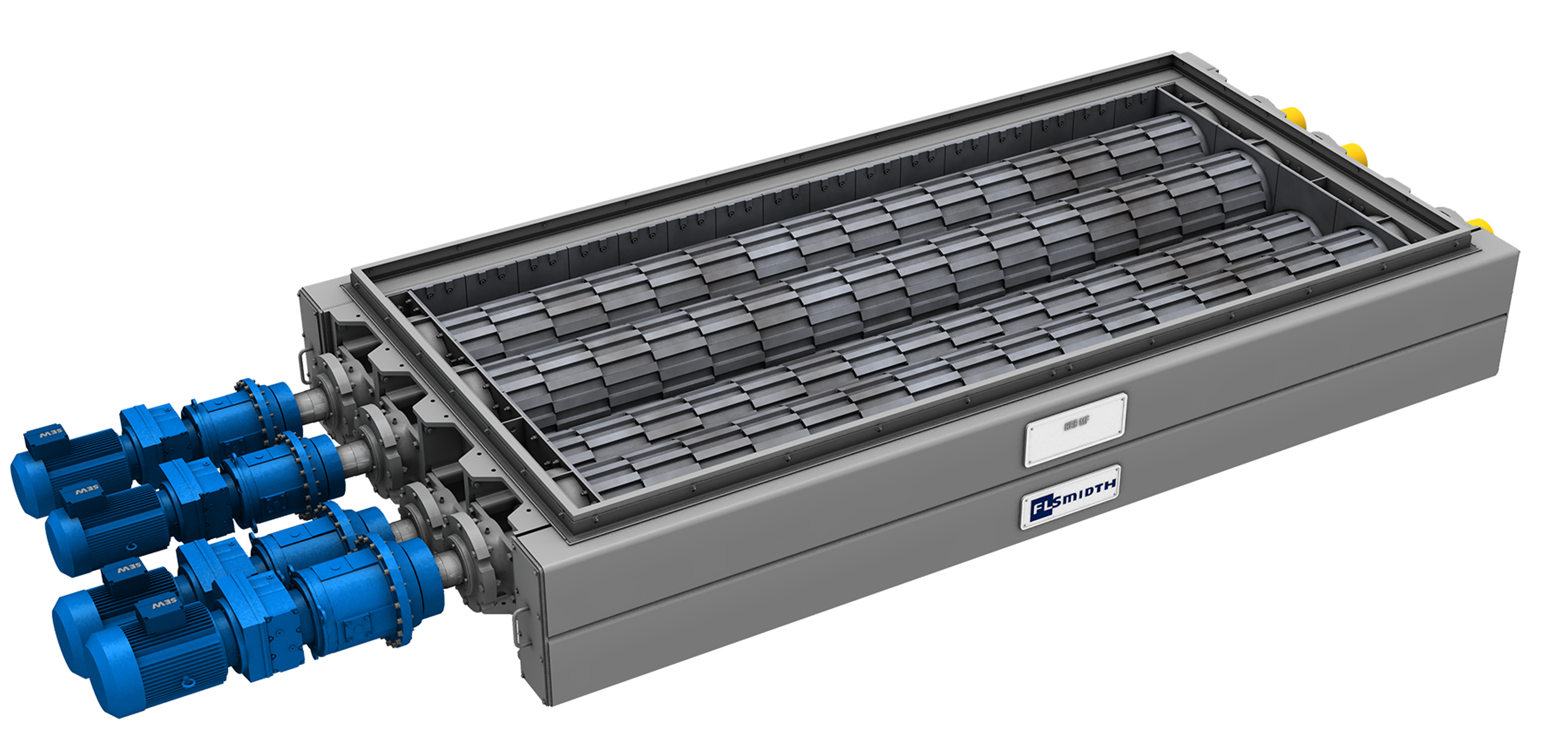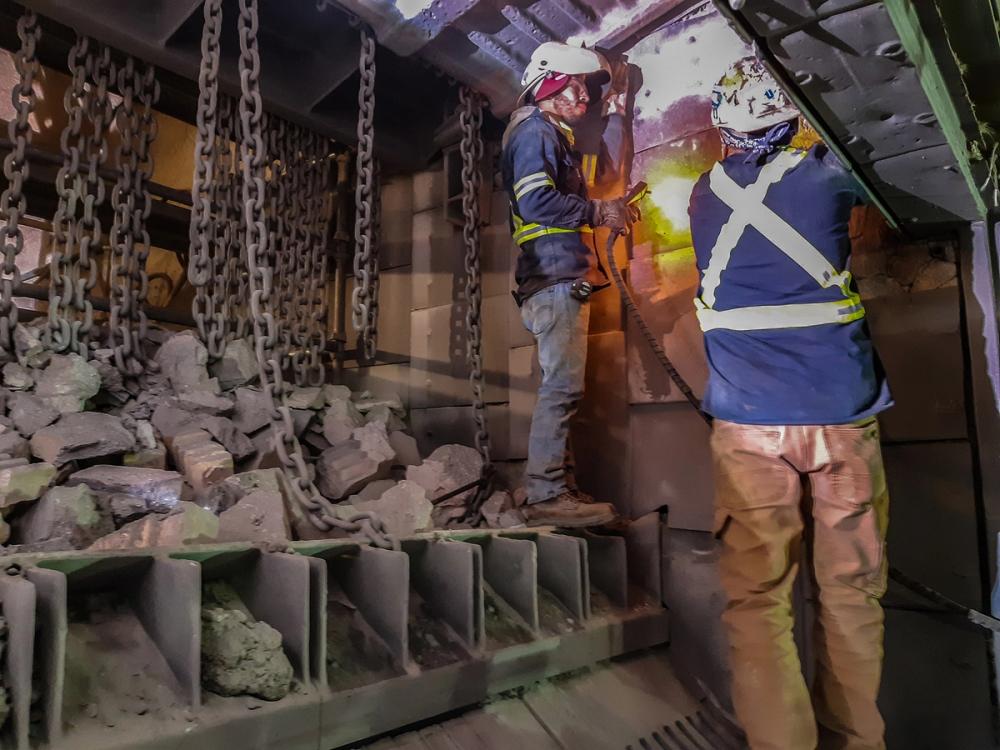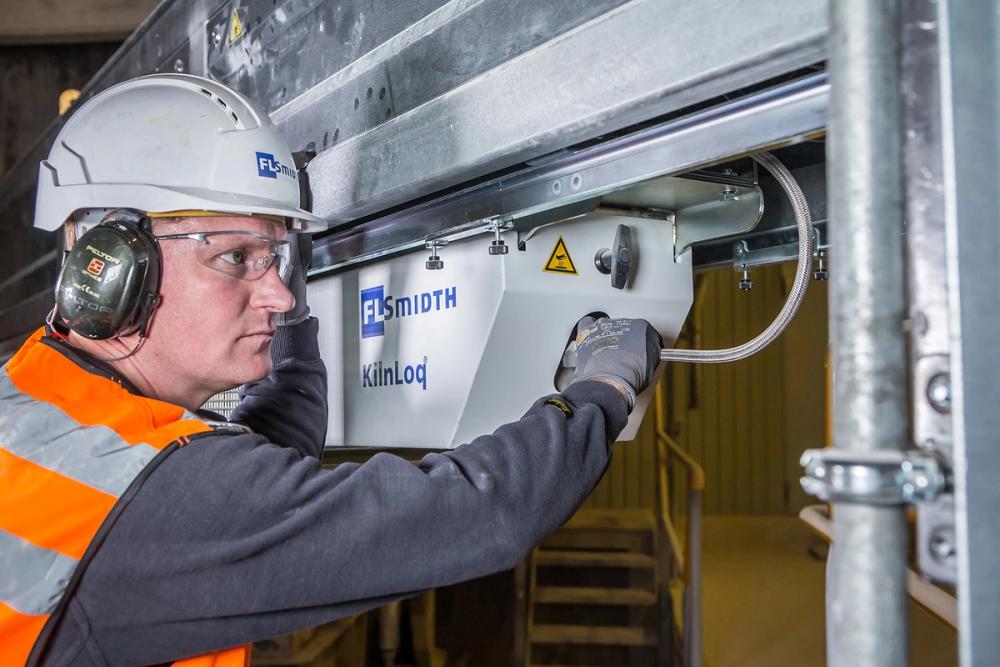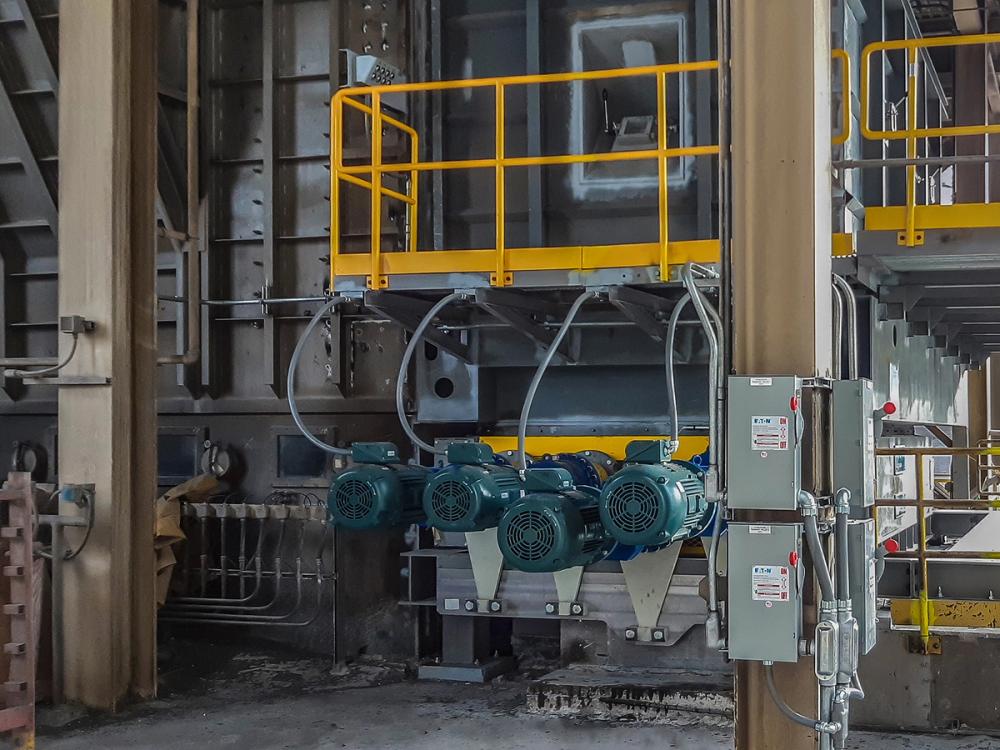article
New HRB eliminates clinker crusher blockages at CalPortland’s Oro Grande plant
CalPortland’s clinker crusher problems were solved by the new Heavy-duty Roller Breaker (HRB), supplied and installed by FLSmidth Cement. Our one-stop-shop service was able to save them time and money, ensuring the successful completion of the project within the scheduled shutdown.
CalPortland was experiencing problems with the clinker crusher at its Oro Grande plant in California. A couple of times a year, a big boulder would come through the cooler and block the hammer crusher, forcing the plant to shutdown both cooler and kiln in order to clear it. As a plant producing 6600 tpd of clinker, the lost production time was costly – sometimes running into millions of dollars over a calendar year. Not to mention the safety risks involved with entering the cooler. On top of that, the hammer crusher needed regular maintenance to replace wear parts and it was using a lot of power. They needed an alternative solution.
No boulder too big for the Heavy-duty Roller Breaker
The plant had been in talks with a couple of suppliers about their problem for a while but eventually decided on a Heavy-duty Roller Breaker (HRB) from FLSmidth Cement.
Kyle Smith, Chief Project Engineer / Project Manager, CalPortland
The HRB can handle clinker boulders up to 1.5 m with no problem. It features a series of transport and crushing rollers that allow right-sized materials to pass through and crush larger materials down to a pre-set size. For Oro Grande, the HRB 414 was chosen to fit within the cooler width. This model consists of two transport rollers and two crushing rollers that are electrically driven.


Sub-25 mm clinker falls through the gaps between the transport rollers, while the bigger lumps are conveyed forwards onto the crusher rollers. The first of these is the ‘dropped roller’, which sits slightly below the horizontal plane of the other rollers. This one rotates clockwise, while the final crusher roller rotates counter-clockwise, pulling the oversized clinker into the nip where it is crushed between the teeth of the cast wear segments.
Ultra-low maintenance solution
An HRB is a very effective, low-wear crushing process due to its relative lower speeds of operation 6 – 8 rpm; a slow, persistent grind. In contrast, hammer crushers use a striking motion that sends bits of clinker flying around the crusher causing wear. In an HRB, if the load gets too high, the crusher rollers reverse, stop, then resume their usual motion, repeating the process until the blockage is cleared. And instead of very high annual maintenance costs of up to $100 000 to maintain the hammer crusher (including labour and parts), the cast wear segments have an expected life of at least 5 years with very minimal maintenance, a significant saving. Additionally, no one has to go into the cooler to clear it – a vast improvement for health and safety.
Power consumption is also much lower, at around 100 HP compared to 150 HP installed with hammer crusher. Not only is this a cost-saver, but it is also in keeping with CalPortland’s ENERGY STAR partner status.
“Saving energy is a company-wide priority,” says Kyle. “We are always looking for ways to make our plants more energy efficient, and more sustainable. The power savings was a motivator for us with this project, as was the anticipation of fewer kiln stops – which have a significant environmental impact on top of the monetary cost.”
Installed by experts
Installation of the HRB was scheduled for the plant’s annual maintenance stop in January 2021.
“These types of projects are commonly contracted out to local teams. However, we decided to have FLSmidth Sioux City – our in-house service and installation team – take on everything except the electrical installation,” explains Sathish Krishnamoorthy, Head of Service Sales – NAMER Cement. “We know the equipment best, so it makes sense for us to take ownership of the installation process, providing a one-stop solution for our customer. Also, we wanted to be on-hand in case of any questions or problems during installation.

This was despite all the restrictions related to the pandemic.
“We were very impressed by the way they handled everything,” says Kyle. “They were diligent, safety-conscious, and mindful of our need to get the plant back online as soon as possible. It was really good to have such a strong FLSmidth presence onsite for the installation.”
During preparations for this project, CalPortland had also been in talks with FLSmidth Cement about purchasing a KilnLoq® inlet probe with Hot/Wet measuring capability.
KilnLoq® HW Laser Gas Analysis System
The system measures gases such as CO, NO, SO2, CO2, HCl and O2 at the kiln inlet, enabling kiln operators to optimise fuel consumption and clinker quality. The KilnLoq also features the unique One Pipe design for easy cleaning and very low maintenance, ensuring maximum uptime.

“As well as being more robust, the KilnLoq gives the plant a much better oxygen, CO reading that they can then use to optimise the kiln, by balancing the air flow split between kiln / calciner, which will also help to reduce fuel consumption,” explains Sathish. “It’s a relatively small project that can have a very big impact.”
Since our crew was already onsite, we offered to install the KilnLoq at the same time as the HRB, saving money on bringing in additional crews.
“We’re really pleased with the results of both projects,” says Kyle. “Crucially, they were completed on time and within our limited shutdown window. That’s largely thanks to FLSmidth Cement’s commitment to the deadline and the good collaboration with our team. The HRB started up at the end of January and in March we saw a boulder come through that would certainly have blocked the old hammer crusher, forcing us to shut down the cooler and the kiln. We’ve had record numbers in our uptime and I think these two projects have been instrumental in that. It was a great experience working with FLSmidth and in particular having FLSmidth Sioux City complete the work – their onsite presence was a real benefit to these projects.”


